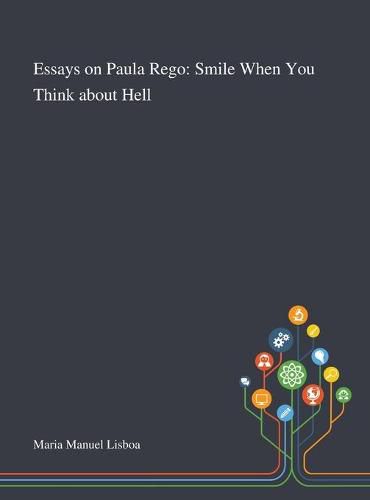Readings Newsletter
Become a Readings Member to make your shopping experience even easier.
Sign in or sign up for free!
You’re not far away from qualifying for FREE standard shipping within Australia
You’ve qualified for FREE standard shipping within Australia
The cart is loading…






This title is printed to order. This book may have been self-published. If so, we cannot guarantee the quality of the content. In the main most books will have gone through the editing process however some may not. We therefore suggest that you be aware of this before ordering this book. If in doubt check either the author or publisher’s details as we are unable to accept any returns unless they are faulty. Please contact us if you have any questions.
In these powerful and stylishly written essays, Maria Manuel Lisboa dissects the work of Paula Rego, the Portuguese-born artist considered one of the greatest artists of modern times. Focusing primarily on Rego’s work since the 1980s, Lisboa explores the complex relationships between violence and nurturing, power and impotence, politics and the family that run through Rego’s art.Taking a historicist approach to the evolution of the artist’s work, Lisboa embeds the works within Rego’s personal history as well as Portugal’s (and indeed other nations’) stories, and reveals the interrelationship between political significance and the raw emotion that lies at the heart of Rego’s uncompromising iconographic style. Fundamental to Lisboa’s analysis is an understanding that apparent opposites - male and female, sacred and profane, aggression and submissiveness - often co-exist in Rego’s work in a way that is both disturbing and destabilising.This collection of essays brings together both unpublished and previously published work to make a significant contribution to scholarship about Paula Rego. It will also be of interest to scholars and students of contemporary painting, Portuguese and British feminist art, and the political and ideological aspects of the visual arts. This work was published by Saint Philip Street Press pursuant to a Creative Commons license permitting commercial use. All rights not granted by the work’s license are retained by the author or authors.
$9.00 standard shipping within Australia
FREE standard shipping within Australia for orders over $100.00
Express & International shipping calculated at checkout
This title is printed to order. This book may have been self-published. If so, we cannot guarantee the quality of the content. In the main most books will have gone through the editing process however some may not. We therefore suggest that you be aware of this before ordering this book. If in doubt check either the author or publisher’s details as we are unable to accept any returns unless they are faulty. Please contact us if you have any questions.
In these powerful and stylishly written essays, Maria Manuel Lisboa dissects the work of Paula Rego, the Portuguese-born artist considered one of the greatest artists of modern times. Focusing primarily on Rego’s work since the 1980s, Lisboa explores the complex relationships between violence and nurturing, power and impotence, politics and the family that run through Rego’s art.Taking a historicist approach to the evolution of the artist’s work, Lisboa embeds the works within Rego’s personal history as well as Portugal’s (and indeed other nations’) stories, and reveals the interrelationship between political significance and the raw emotion that lies at the heart of Rego’s uncompromising iconographic style. Fundamental to Lisboa’s analysis is an understanding that apparent opposites - male and female, sacred and profane, aggression and submissiveness - often co-exist in Rego’s work in a way that is both disturbing and destabilising.This collection of essays brings together both unpublished and previously published work to make a significant contribution to scholarship about Paula Rego. It will also be of interest to scholars and students of contemporary painting, Portuguese and British feminist art, and the political and ideological aspects of the visual arts. This work was published by Saint Philip Street Press pursuant to a Creative Commons license permitting commercial use. All rights not granted by the work’s license are retained by the author or authors.